The Hellaborus genus are a group of woodland edge plants which thrives in partial shade and well drained humus rich soils and flower from December to May. Their mounds of evergreen foliage and delicate flowers lift the spirits in the darkest of winter days.
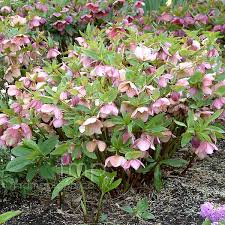
H. orientallis
Hellaborus orientallis: Mounds of dark glossy green palmate foliage up to 60cm high,with flower stems lasting from late February to early May. The colours vary from white, cream, with pink and purple speckles, to dusky purple to light green, the nodding flower heads give way to attractive seed heads in May.
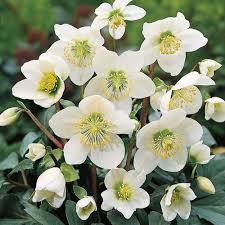
H. niger
Helleborus niger: Green/grey foliage held in 30cm high mounds with open white saucer shaped flowers with bright yellow stamens on pink stems. Flowering late December to March.
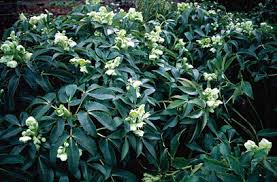
H.argutifolius
Helleborus argutifolius: A wonderful free seeding thug, that has a foliage and habit with the wow factor! Strong upright stems to 60cm high hold deeply palmate glaucous leaves which are heavily toothed. Great stems of multiple pea green flowers from March to May.
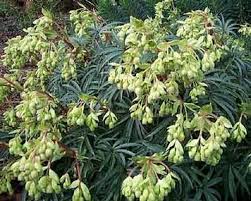
H.foetidus
Helleborus foetidus: The native British hellebore. With clumps of deeply divided glossy green leaves in attractive mounds up to 60cm. Free flowering of small green flowers with a purple edge from February to April. Seeds freely.
To get the greatest impact out of planting these brilliant herbaceous perennials, plant them in sweeps and clumps to give a flowering impact. Also to best view their delicate flowers which tend to nod downwards, planting on a bank or raised bed can display them at their best. If as the flower stems emerge and at the point the buds are to open, then some subtle cutting back of the leaves might be carried out so the flowers can be seen in all their glory. Also like all plants that are flowering in winter early spring, chose a spot close to the house or along side a path or near the garage or shed where they will be easy to enjoy.
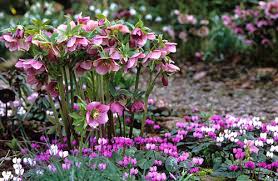
hellabores-adding-colour-to-the-winter-garden
Helleborus black spot: An unsightly disease that effects mostly the foliage with large spreading black spots but can also effect the stems and flower buds, to treat infected plants cut out all effected parts and to prevent it spreading to other Hellebores. Most strong plants will cope with an attack and just need the effected areas pruned out and will make healthy new growth. The diseased material must be binned or burnt straight away, to help prevent spreading. do not compost.
